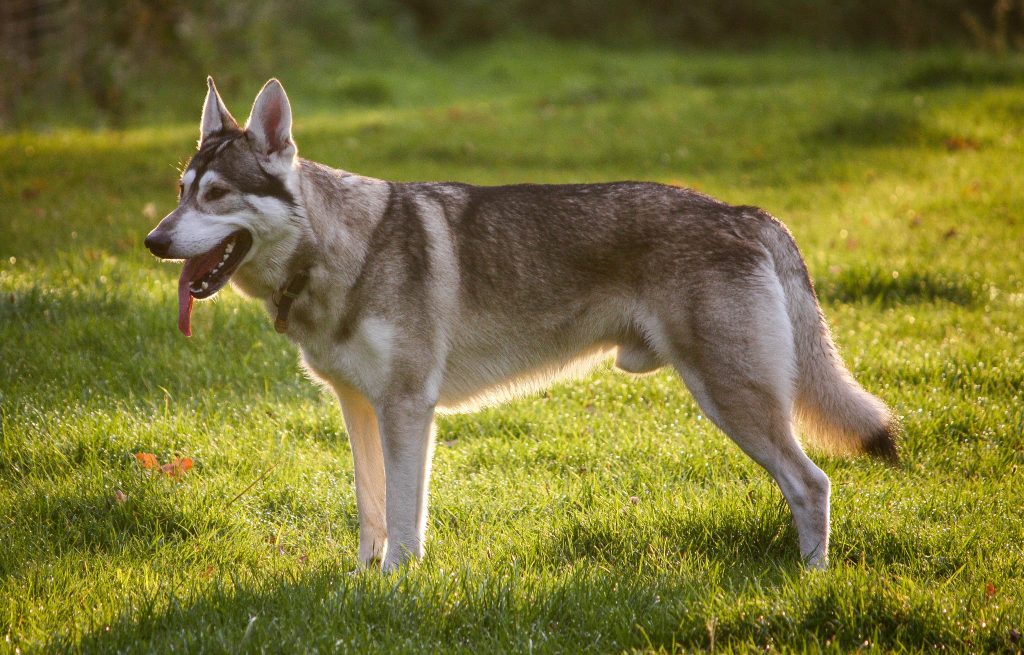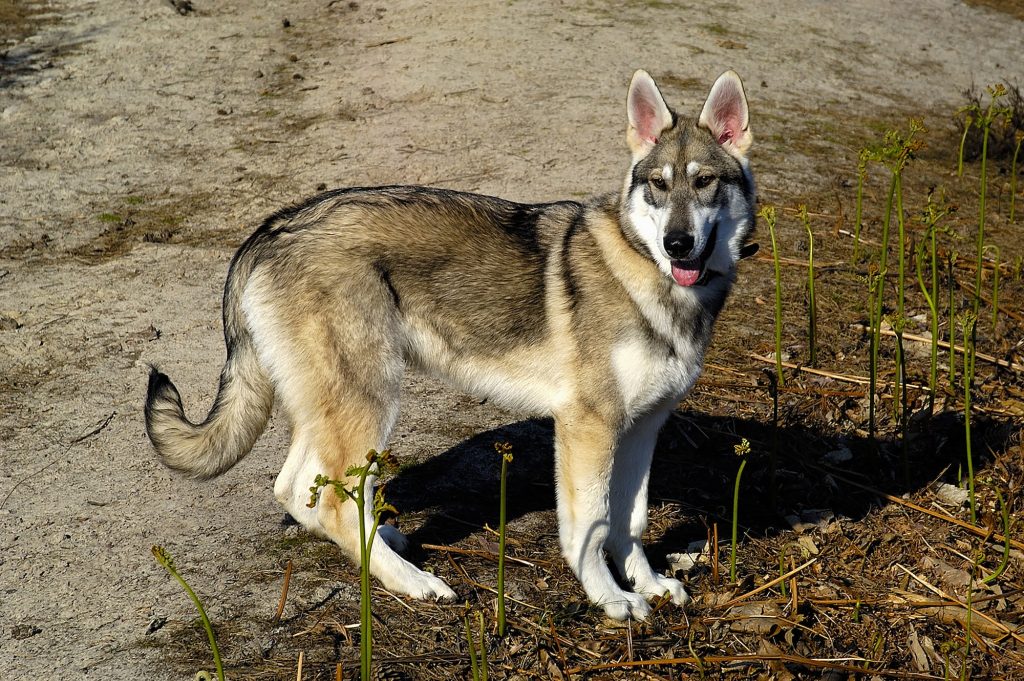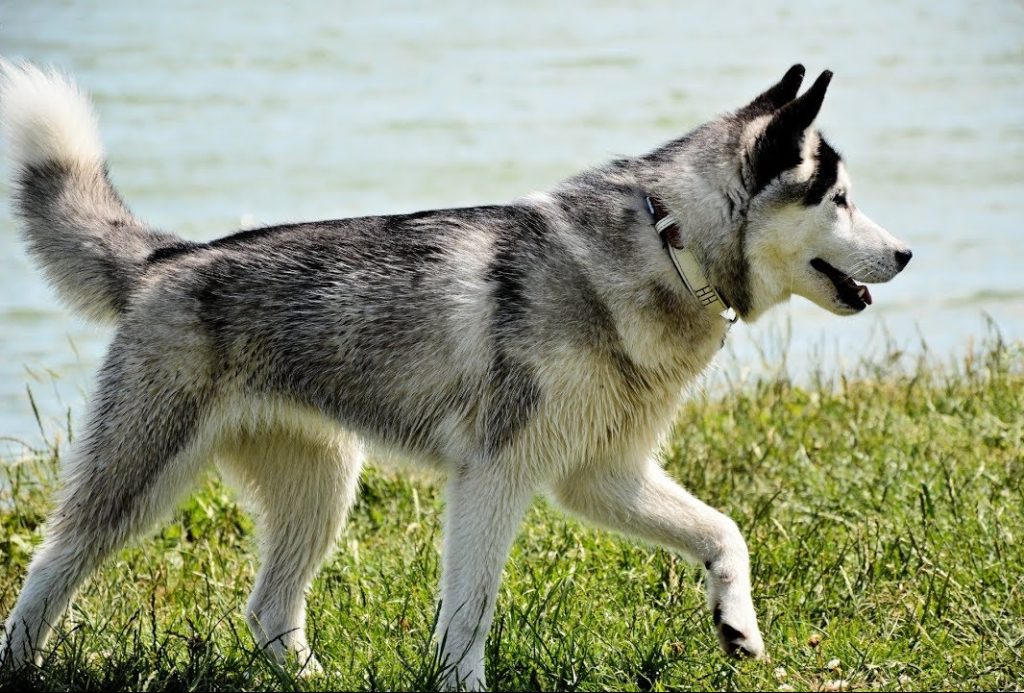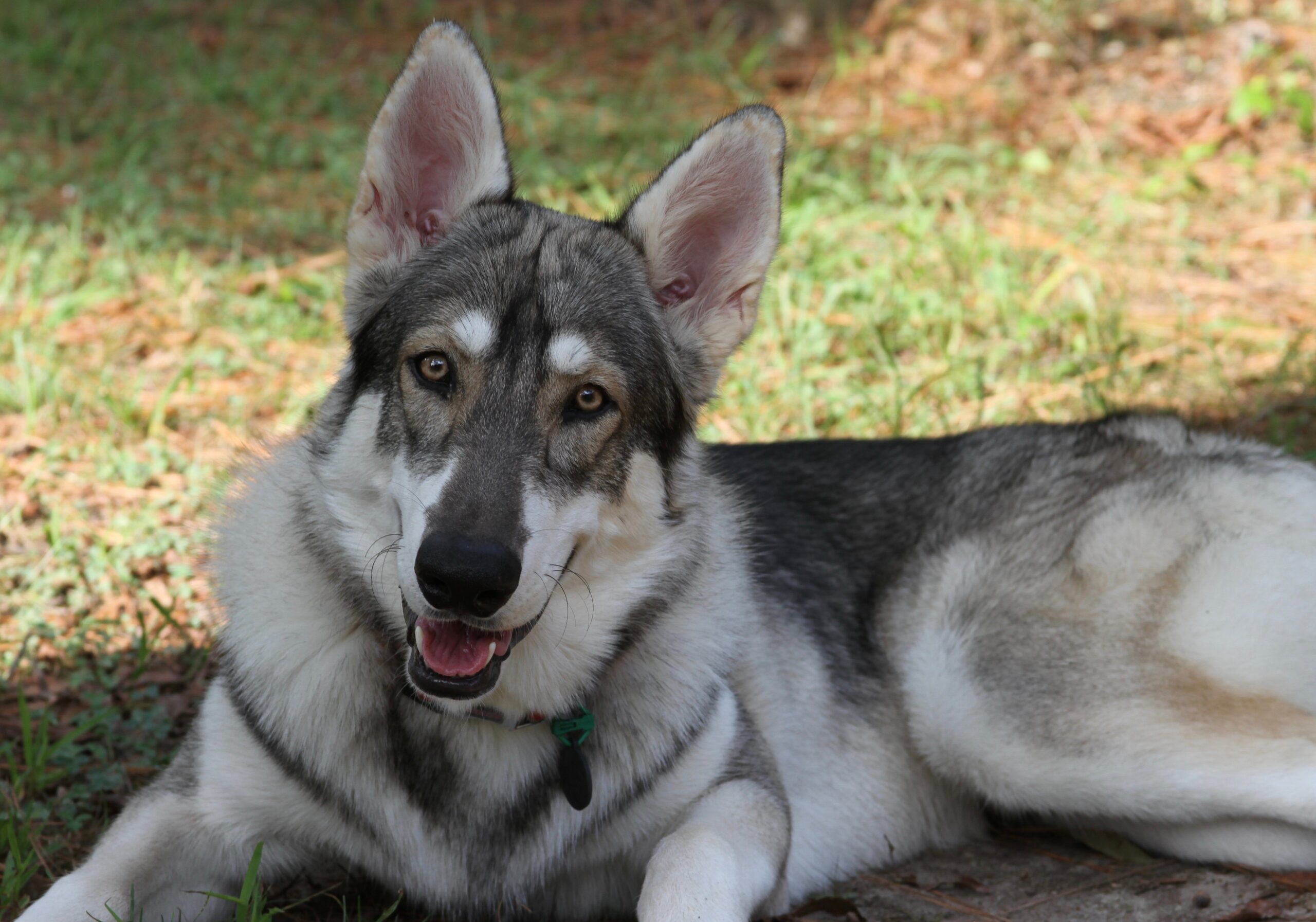Are you considering getting a Northern Inuit Dog as a pet? If you’re looking for a loyal, intelligent, and playful companion, then this breed might be the perfect fit for you. Originally bred in the 1980s as a wolf-like dog for the UK film industry, Northern Inuit Dogs have gained popularity as family pets due to their friendly nature and striking appearance. But before you make a decision, it’s important to learn more about this breed’s temperament, exercise requirements, and other characteristics to ensure that it’s a good match for your lifestyle and family.
Breed Category: Working
Country of Origin: United Kingdom
Average Size:60-71 cm
Average Weight:30-40 kg
Average Life Span: 12-14 years
Grooming Requirements: Moderate
Exercise Requirements:High
History and Origin
The Northern Inuit Dog is a breed that has gained popularity in recent years, thanks to its striking resemblance to the wolves of the Arctic. This breed was developed in the UK in the 1980s by a group of dog enthusiasts who wanted to create a dog that looked like a wolf but had a friendly and loyal temperament.
The Northern Inuit Dog was created by crossing various breeds, including the Siberian Husky, Alaskan Malamute, and German Shepherd. The breed was also influenced by the Canadian Eskimo Dog and the Inuit Sled Dog. The goal was to create a dog that was strong, agile, and had a thick coat to withstand the harsh Arctic climate.
The Northern Inuit Dog was originally bred for use in films and television shows. The breed gained popularity after being featured in the HBO series Game of Thrones, where they played the role of the Direwolves. The breed’s popularity has since grown, and they are now kept as pets by many people around the world.
The Northern Inuit Dog is a large breed, with males weighing up to 110 pounds and females weighing up to 88 pounds. They have a thick double coat that comes in a variety of colors, including black, white, gray, and sable. The breed is known for its friendly and loyal temperament, making them great family pets. They are also highly intelligent and trainable, making them suitable for a variety of activities, including obedience training, agility, and search and rescue.
The Northern Inuit Dog is a relatively healthy breed, with a lifespan of 12-14 years. However, like all breeds, they are prone to certain health issues, including hip dysplasia, eye problems, and allergies. It is important to choose a reputable breeder and to have your dog regularly checked by a veterinarian to ensure they remain healthy.
In conclusion, the Northern Inuit Dog is a breed that was developed in the UK in the 1980s by crossing various breeds, including the Siberian Husky, Alaskan Malamute, and German Shepherd. The breed was originally bred for use in films and television shows and gained popularity after being featured in the HBO series Game of Thrones. The Northern Inuit Dog is a large breed with a friendly and loyal temperament, making them great family pets. They are also highly intelligent and trainable, making them

Size and Breed Category
The Northern Inuit Dog is a large breed of dog that originated in the United Kingdom. They are a working breed that was developed in the 1980s by breeding Siberian Huskies, Alaskan Malamutes, and German Shepherds. The breed was created to resemble the wolf-like appearance of the dogs used in the television series “Game of Thrones.”
The Northern Inuit Dog is a muscular and athletic breed that can weigh up to 45-55 kg and stand up to 76 cm tall at the shoulder. They have a thick double coat that comes in a variety of colors, including black, white, gray, and sable. The breed is known for their endurance and agility, making them well-suited for activities such as hiking, running, and agility training. They are also highly intelligent and trainable, making them a popular choice for search and rescue work. Despite their wolf-like appearance, the Northern Inuit Dog is a friendly and loyal breed that makes a great family pet.
Fur Length and Colour
The fur of the Northern Inuit Dog is typically medium to long in length, with a thick undercoat and a coarser topcoat. The fur is designed to protect the dog from the harsh weather conditions of the Arctic region, where the breed originated. The fur is also water-resistant, which allows the dog to swim in cold water without getting wet. The fur can come in a variety of colours, including black, white, grey, and brown. Some dogs may have a combination of these colours, while others may have a solid colour. The fur is often described as being soft and fluffy, which makes the dog a popular choice for those who enjoy cuddling with their pets.
The colour of the Northern Inuit Dog’s fur can vary depending on the individual dog. Some dogs may have a solid colour, while others may have a combination of colours. The most common colours are black, white, grey, and brown. The fur can also have different shades of these colours, which can create a unique look for each dog. The fur is often described as being thick and fluffy, which gives the dog a majestic appearance. The fur is also designed to protect the dog from the cold weather, which is important for a breed that originated in the Arctic region. Overall, the fur of the Northern Inuit Dog is an important part of its appearance and serves a practical purpose as well.
Termperament and Trainability
Northern Inuit Dogs are known for their friendly and sociable temperament. They are loyal and affectionate towards their owners and are generally good with children. However, they can be wary of strangers and may require proper socialization to prevent any aggressive behavior. These dogs are also highly intelligent and have a strong desire to please their owners, making them easy to train. They respond well to positive reinforcement techniques and enjoy learning new tricks and commands. Northern Inuit Dogs have a high energy level and require regular exercise to keep them physically and mentally stimulated.
The trainability of Northern Inuit Dogs is further enhanced by their natural instincts. They were originally bred as working dogs and have a strong prey drive, making them excellent hunters and trackers. They are also known for their endurance and can work for long hours without getting tired. However, their independent nature can sometimes make them stubborn and difficult to train. It is important to establish a firm and consistent training routine from an early age to prevent any behavioral issues. Northern Inuit Dogs thrive in an environment where they have a job to do and are given plenty of opportunities to use their natural abilities.

Known Health Conditions
Northern Inuit Dogs are a breed that is generally healthy, but like all breeds, they are prone to certain health conditions. One of the most common health issues that Northern Inuit Dogs face is hip dysplasia. This condition occurs when the hip joint doesn’t develop properly, causing pain and discomfort for the dog. Northern Inuit Dogs can also suffer from elbow dysplasia, which is a similar condition affecting the elbow joint. Both hip and elbow dysplasia can be hereditary, so it’s important to ensure that any breeding dogs are screened for these conditions.
Another health condition that Northern Inuit Dogs may experience is progressive retinal atrophy (PRA). This is a degenerative eye disease that can lead to blindness. PRA is caused by a genetic mutation, so it’s important to ensure that breeding dogs are tested for this condition. Northern Inuit Dogs may also be prone to allergies, which can cause skin irritation and itching. Allergies can be caused by a variety of factors, including food, pollen, and dust. If your Northern Inuit Dog is experiencing allergies, it’s important to work with your veterinarian to identify the cause and develop a treatment plan.

Openness to Strangers
Northern Inuit Dogs are known for their friendly and welcoming nature towards strangers. They are a breed that is naturally curious and sociable, making them great companions for those who enjoy meeting new people. These dogs are not shy or timid, and they will often approach strangers with a wagging tail and a friendly demeanor. They are also very adaptable and can quickly adjust to new environments and situations, which makes them great travel companions. Northern Inuit Dogs are not aggressive towards strangers, and they are unlikely to bark or growl at unfamiliar people. Instead, they are more likely to greet them with a wagging tail and a friendly lick.
Despite their friendly nature, Northern Inuit Dogs can be quite independent and stubborn at times. They are not always eager to please their owners and may require some patience and persistence when it comes to training. However, once they have established a bond with their owner, they are very loyal and affectionate. Northern Inuit Dogs are also very intelligent and can be trained to perform a variety of tasks, including search and rescue, therapy work, and obedience competitions. They are a breed that thrives on human interaction and attention, and they are happiest when they are spending time with their owners. Overall, Northern Inuit Dogs are a friendly and adaptable breed that make great companions for those who enjoy meeting new people and exploring new places.
Playfulness Level
The Northern Inuit Dog is a highly playful breed that loves to engage in various activities. They are known for their energetic and lively nature, making them a great companion for families with children. These dogs have a strong desire to play and are always up for a game of fetch or tug-of-war. They are also highly intelligent and enjoy learning new tricks and commands, which can be a great way to keep them mentally stimulated. The Northern Inuit Dog’s playful nature makes them a great addition to any household that is looking for a fun-loving and active companion.
In addition to their love for play, the Northern Inuit Dog is also known for their adventurous spirit. They enjoy exploring new environments and are always up for a good adventure. This makes them a great companion for outdoor enthusiasts who enjoy hiking, camping, and other outdoor activities. Their playful and adventurous nature also makes them a great candidate for agility training, as they are quick learners and enjoy the challenge of new obstacles. Overall, the Northern Inuit Dog’s playful and adventurous nature makes them a great companion for anyone who is looking for a fun-loving and active dog.
Suitability as a Pet for Children
Northern Inuit Dogs are a highly energetic and intelligent breed, making them a great choice for families with children who are looking for an active and loyal companion. They are known for their friendly and affectionate nature, and their love for human interaction. With proper training and socialization, Northern Inuit Dogs can be great with children, as they are patient and gentle. However, due to their high energy levels, they require plenty of exercise and mental stimulation to keep them happy and healthy. Overall, Northern Inuit Dogs can make great pets for families with children who are willing to provide them with the attention and care they need.
Exercise Needs
Northern Inuit Dogs are highly active and require a significant amount of exercise to maintain their physical and mental health. These dogs were originally bred for sledding and hunting, and as such, they have a lot of energy to burn. Owners should aim to provide at least two hours of exercise per day, which can include long walks, runs, hikes, and playtime in a secure, fenced area. Northern Inuit Dogs also enjoy participating in canine sports such as agility, obedience, and flyball. It is important to note that these dogs have a strong prey drive and should always be kept on a leash or in a secure area to prevent them from chasing after small animals.
In addition to physical exercise, Northern Inuit Dogs also require mental stimulation to prevent boredom and destructive behavior. These dogs are highly intelligent and enjoy learning new tricks and commands. Owners can provide mental stimulation through training sessions, puzzle toys, and interactive games. Northern Inuit Dogs also benefit from socialization with other dogs and people, which can be achieved through regular trips to the dog park or attending obedience classes. It is important to provide a variety of activities to prevent these dogs from becoming bored and restless, as this can lead to destructive behavior such as chewing and digging.

Suitability for a Multi-Pet Family
Northern Inuit Dogs have been known to coexist peacefully with other pets in the household, including cats and smaller dogs. They are generally friendly and sociable animals, and with proper socialization and training, they can learn to live harmoniously with other animals. However, as with any breed, individual temperament and personality can vary, and it is important to introduce new pets slowly and carefully to ensure a positive outcome.
Housing Requirements
Northern Inuit Dogs require a spacious and secure living environment that allows them to move around freely. They are active dogs that need plenty of exercise, so a large garden or access to open spaces is essential. A minimum of one hour of exercise per day is recommended, but they will happily take more if given the opportunity. They are also known to be escape artists, so a secure fence or wall is necessary to prevent them from wandering off. In terms of shelter, they require a warm and dry place to sleep, preferably indoors. They have a thick double coat that provides insulation, but they still need protection from extreme weather conditions.
Northern Inuit Dogs are social animals that thrive on human interaction and companionship. They do not do well when left alone for long periods, so it is important that their housing arrangements allow for regular human contact. They are also known to be pack animals, so they may benefit from having another dog as a companion. When it comes to feeding, they require a balanced diet that meets their nutritional needs. They are not fussy eaters and will happily eat dry or wet food, but it is important to monitor their weight and adjust their diet accordingly. Overall, Northern Inuit Dogs require a loving and attentive owner who can provide them with a suitable living environment and plenty of exercise and social interaction.
Summary
The Northern Inuit Dog has a friendly and loyal temperament, making them a suitable pet for those who are looking for a companion. They are known to be good with children and other animals, making them a great addition to a family. They require regular exercise and mental stimulation, so they are best suited to active owners who can provide them with plenty of opportunities to run and play. With proper training and socialization, the Northern Inuit Dog can make a wonderful pet for those who are willing to put in the time and effort to care for them.
Northern Inuit Dog FAQS
Northern Inuit Dogs are intelligent and trainable, but they can be stubborn at times. Consistent and positive training methods are recommended.
Yes, Northern Inuit Dogs are known to be great with children and make excellent family pets.
Northern Inuit Dogs can be prone to hip dysplasia, eye problems, and allergies. Regular vet check-ups are recommended.
Northern Inuit Dogs are large and active dogs that require a lot of space to move around. They are not recommended for apartment living.
Northern Inuit Dogs can get along with other pets if socialized properly from a young age. However, they have a high prey drive and may not be suitable for homes with small animals.
Yes, Northern Inuit Dogs are high-energy dogs and require at least 2 hours of exercise per day.
Yes, Northern Inuit Dogs have a thick double coat and shed heavily twice a year. Regular grooming is necessary to manage shedding.
Northern Inuit Dogs have a lifespan of 10-14 years on average.
A Northern Inuit Dog can grow up to 70 cm in height.
The average weight of a Northern Inuit Dog is between 30-45 kg.
